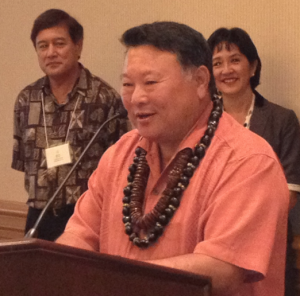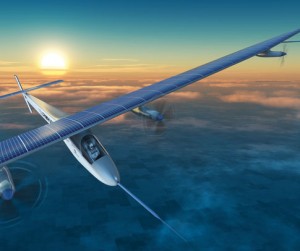
 The United Nations, the International Monetary Fund,
The United Nations, the International Monetary Fund, the Global Economic Symposium and others have all issued reports supporting – A rural family in Africa burns around 60 liters of kerosene a year to light their home. The average kerosene lamp in Africa spews a ton of CO2 in less than 10 years. Solar lighting can replace kerosene and wood, and improve the health of the people and the environment. Last year QuestPoint interviewed Jeff Olshesky, a cofounder of Beyond Solar a US based organization whose mission is to improve the educational, medical, and economic well being of individuals and communities in the developing world by providing solar powered electricity. He and co founder Trevor Knauf had just completed a project with D. Light Design, a solar lantern manufacturer in New Delhi with distribution capabilities throughout India, and South Orissa Voluntary Action, a registered non-government organization in the Indian state of Orissa.
the Global Economic Symposium and others have all issued reports supporting – A rural family in Africa burns around 60 liters of kerosene a year to light their home. The average kerosene lamp in Africa spews a ton of CO2 in less than 10 years. Solar lighting can replace kerosene and wood, and improve the health of the people and the environment. Last year QuestPoint interviewed Jeff Olshesky, a cofounder of Beyond Solar a US based organization whose mission is to improve the educational, medical, and economic well being of individuals and communities in the developing world by providing solar powered electricity. He and co founder Trevor Knauf had just completed a project with D. Light Design, a solar lantern manufacturer in New Delhi with distribution capabilities throughout India, and South Orissa Voluntary Action, a registered non-government organization in the Indian state of Orissa.
Audio clip: Adobe Flash Player (version 9 or above) is required to play this audio clip. Download the latest version here. You also need to have JavaScript enabled in your browser.
 I recently spoke with Jeff Olshesky of Beyond Solar who completed its third project providing
I recently spoke with Jeff Olshesky of Beyond Solar who completed its third project providing solar power in the eastern province of Zambia. Beyond Solar partnered with Dwankhozi Hope, to provide solar powered lighting in three separate rooms in a primary school. Their earlier projects involved the distribution of pre-assembled solar powered lanterns to hundreds of families in multiple villages, while utilizing a hybrid micro-finance model that required the beneficiaries to pay for a portion the products they received. In Zambia, they installed solar panels on the roof of a school building to power lights and three laptop computers. Financing was provided in a joint effort by Beyond Solar and Dwankhozi Hope. While the planning of this project began months in advance, the actual time required to complete the project, after arriving in Zambia, was five days. Jeff said while the benefits to the school is fairly apparent…the real reward is to me and the deep feeling I get from making a real difference in the world. They are in the midst of planning the next project in Zambia One potential project would be to install a small, roof-mounted solar lighting system in each of the neighboring villages. This would provide a “study room” for the students whose distant proximity from the central school prevents them from returning to the school in the evening. Another potential project that would bring income to the area would be a solar-powered water pump that could irrigate a cash crop such as cotton. These and many other potential projects would greatly improve the quality of life for the members of the Dwankhozi School District. The challenges to execute them will be difficult but equally rewarding as well.
solar power in the eastern province of Zambia. Beyond Solar partnered with Dwankhozi Hope, to provide solar powered lighting in three separate rooms in a primary school. Their earlier projects involved the distribution of pre-assembled solar powered lanterns to hundreds of families in multiple villages, while utilizing a hybrid micro-finance model that required the beneficiaries to pay for a portion the products they received. In Zambia, they installed solar panels on the roof of a school building to power lights and three laptop computers. Financing was provided in a joint effort by Beyond Solar and Dwankhozi Hope. While the planning of this project began months in advance, the actual time required to complete the project, after arriving in Zambia, was five days. Jeff said while the benefits to the school is fairly apparent…the real reward is to me and the deep feeling I get from making a real difference in the world. They are in the midst of planning the next project in Zambia One potential project would be to install a small, roof-mounted solar lighting system in each of the neighboring villages. This would provide a “study room” for the students whose distant proximity from the central school prevents them from returning to the school in the evening. Another potential project that would bring income to the area would be a solar-powered water pump that could irrigate a cash crop such as cotton. These and many other potential projects would greatly improve the quality of life for the members of the Dwankhozi School District. The challenges to execute them will be difficult but equally rewarding as well.
 Meanwhile, Empowered by Light a west coast non profit partnered with Lemnis who has supplied more than a thousand Pharox Solar Kits to schools in rural villages also in Zambia. Through its Solar: Zambia project, Empowered by Light hopes to donate a total of 5,000 solar-powered lights to communities in the rural parts of the country. Providing inexpensive electric lighting encourages nighttime activities such as studying and reading and can displace open-flame kerosene lamps and candles, saving money and eliminating the hazards of fire, burn and respiratory disease. “Our hope is that the educational benefits of our project will ultimately gain the attention of elected officials and encourage them to provide the same service to their own people,” said Marco Krapels, Co-Founder of Empowered by Light.
Meanwhile, Empowered by Light a west coast non profit partnered with Lemnis who has supplied more than a thousand Pharox Solar Kits to schools in rural villages also in Zambia. Through its Solar: Zambia project, Empowered by Light hopes to donate a total of 5,000 solar-powered lights to communities in the rural parts of the country. Providing inexpensive electric lighting encourages nighttime activities such as studying and reading and can displace open-flame kerosene lamps and candles, saving money and eliminating the hazards of fire, burn and respiratory disease. “Our hope is that the educational benefits of our project will ultimately gain the attention of elected officials and encourage them to provide the same service to their own people,” said Marco Krapels, Co-Founder of Empowered by Light.
 The Department of Defense could generate 7,000 megawatts (MW) of solar energy—equivalent to the output of seven nuclear power plants—on four military bases located in the California desert, according to a study released today by DoD’s Office of Installations and Environment. The year-long study, conducted by the consultancy ICF International, looked at seven military bases in California and two in Nevada. It finds that, even though 96 percent of the surface area of the nine bases is unsuited for solar development because of military use, endangered species and other factors, the solar-compatible area is nevertheless large enough to generate more than 30 times the electricity consumed by the California bases, or about 25 percent of the renewable energy that the State of California is requiring utilities to use by 2015.
The Department of Defense could generate 7,000 megawatts (MW) of solar energy—equivalent to the output of seven nuclear power plants—on four military bases located in the California desert, according to a study released today by DoD’s Office of Installations and Environment. The year-long study, conducted by the consultancy ICF International, looked at seven military bases in California and two in Nevada. It finds that, even though 96 percent of the surface area of the nine bases is unsuited for solar development because of military use, endangered species and other factors, the solar-compatible area is nevertheless large enough to generate more than 30 times the electricity consumed by the California bases, or about 25 percent of the renewable energy that the State of California is requiring utilities to use by 2015.








 (TNDC)
(TNDC)










